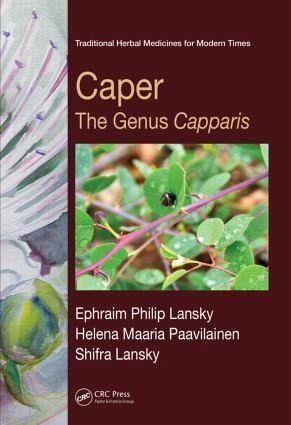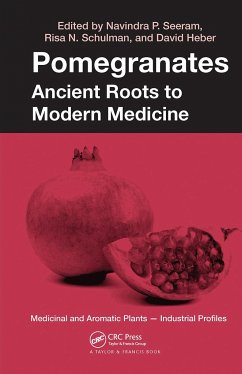
Caper
The Genus Capparis
Versandkostenfrei!
Versandfertig in 1-2 Wochen
234,99 €
inkl. MwSt.
Weitere Ausgaben:

PAYBACK Punkte
117 °P sammeln!
Caper: The Genus Capparis presents a pharmacognostic and ethnopharmacological exploration of the genus Capparis, emphasizing its medicinal potential. There is a long history of safe usage of Capparis parts both in diet and as plant drugs throughout the world, and the details of this usage are summarized in 39 tables covering numerous Capparis species. This detailed survey of historical and traditional medical uses of capers provides a forum for the integration of ethnomedicine and modern pharmacology. This book tracks the use of the genus Capparis from the present position of caper fruit and i...
Caper: The Genus Capparis presents a pharmacognostic and ethnopharmacological exploration of the genus Capparis, emphasizing its medicinal potential. There is a long history of safe usage of Capparis parts both in diet and as plant drugs throughout the world, and the details of this usage are summarized in 39 tables covering numerous Capparis species. This detailed survey of historical and traditional medical uses of capers provides a forum for the integration of ethnomedicine and modern pharmacology. This book tracks the use of the genus Capparis from the present position of caper fruit and its flowers as a niche culinary article of economic importance, to ancient times and its use in traditional medicine of the Mediterranean and the Middle East. Section I covers the various classes of compounds found in Capparis that hold potential for being physiologically and medically active, including alkaloids, flavonoids, vitamins, and proteins and amino acids. Section II examines therapeutic uses for Capparis species for medical conditions such as inflammation, rheumatism, diabetes mellitus, pain and fever, cancer, infections and infestations, hypertension, and more. The authors balance the role of this plant in mythological and religious thinking with advances in modern chemical and pharmacological research. Coverage of ethnomedical usage leads to practical discussions of how the unique evolution of the genus Capparis impacts present and future applications of the different species for medicine and therapeutic nutrition. Providing chemical and pharmacological reviews to an extent not previously undertaken, this book will serve as a firm basis for scientists interested in conducting research on this novel source of safe phytoceutical agents.













